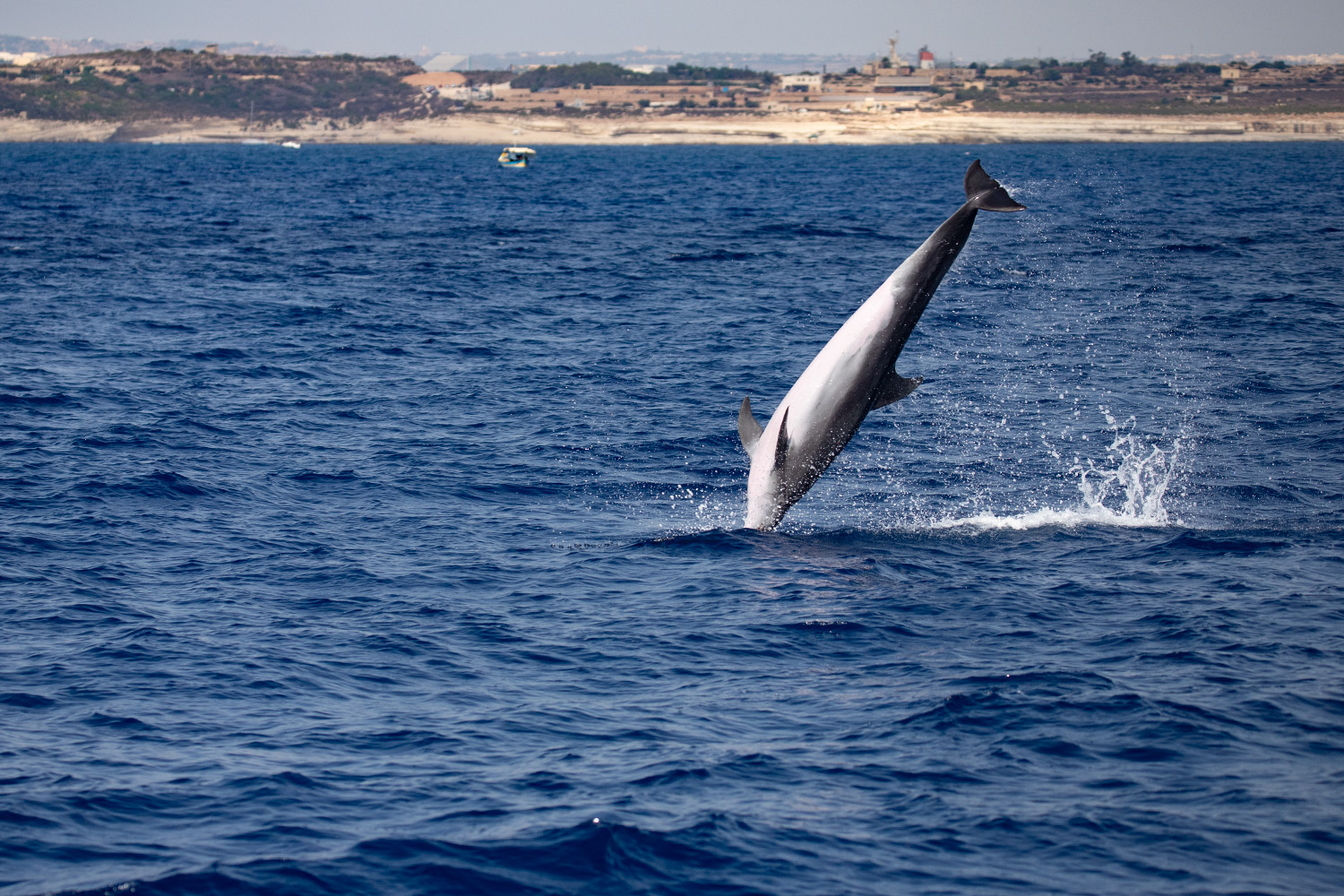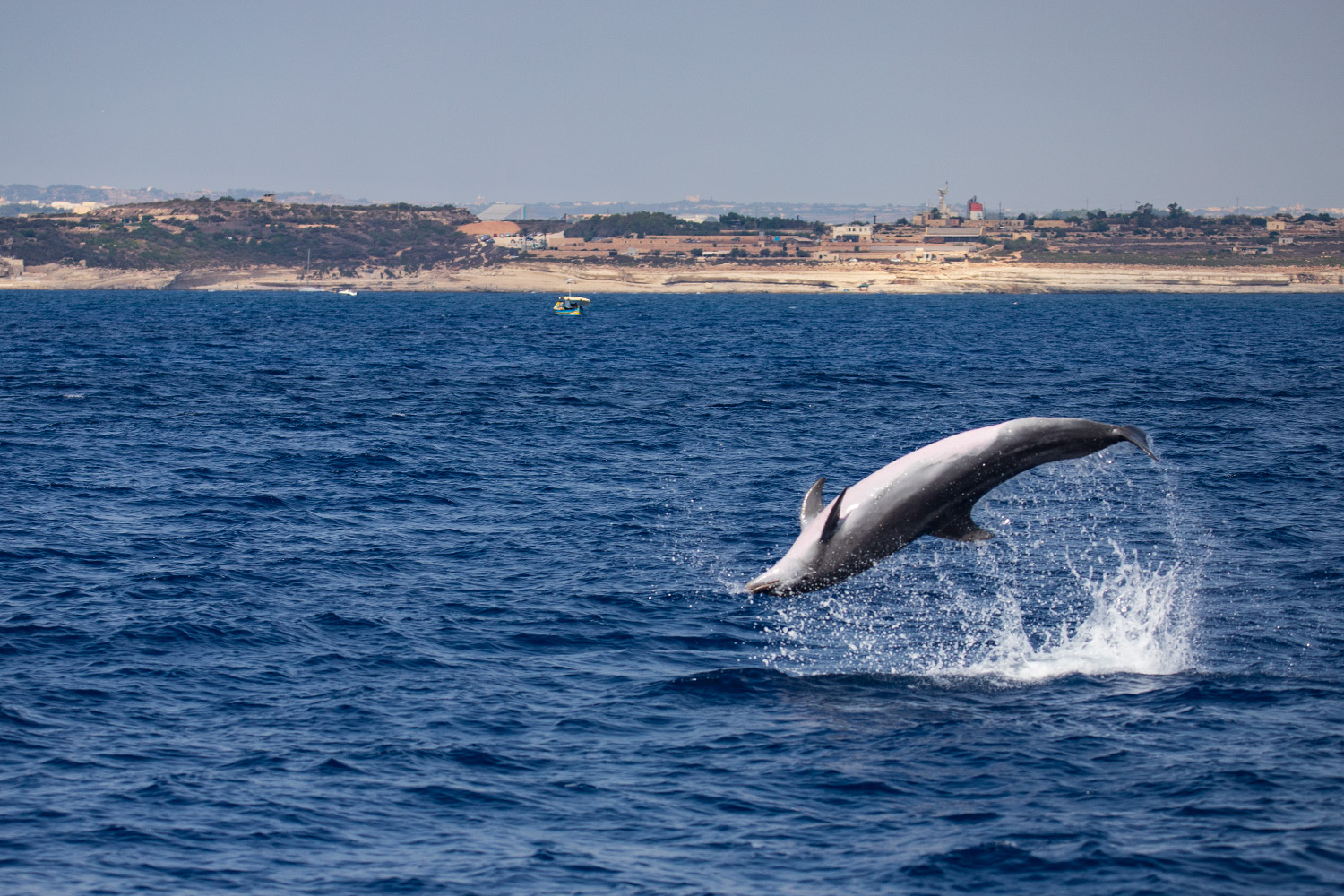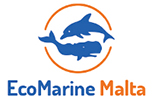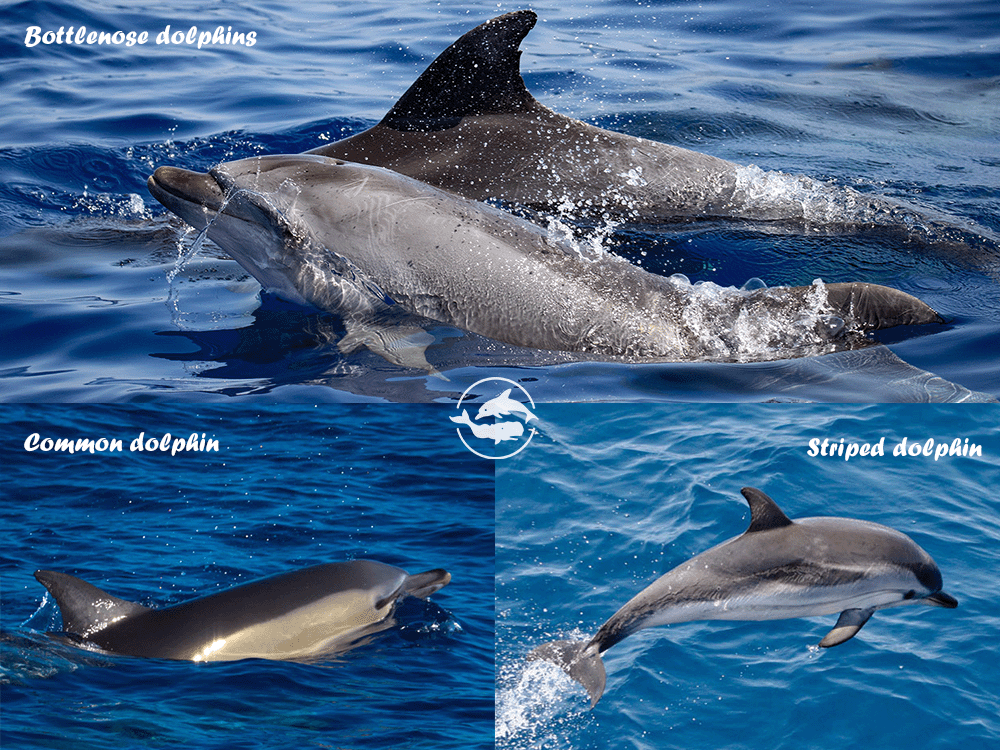
Exploring Cetaceans in Maltese Waters: A Scientific Insight
Dolphins, the predominant cetaceans in Maltese waters, embody a captivating aspect of marine life.
Cetaceans, a category encompassing whales and dolphins, are marine mammals that evolved to thrive exclusively in aquatic environments. They breathe air, give birth to live offspring and breastfeed them. Even if in the Mediterranean Sea, it is possible to encounter regularly eight different species of cetaceans the Bottlenose Dolphin (Tursiops truncatus) and Striped Dolphin (Stenella coeruleolba) emerge as the main species observed in Maltese waters, with occasional sightings of Common Dolphins (Delphinus delphis). The latter, listed as ‘Least Concern’ globally by the IUCN Red List, faces ‘Endangered’ status in the Mediterranean region, necessitating conservation efforts against potential threats like prey depletion, bycatch, and marine pollution.
Identification Characteristics:
Bottlenose Dolphin: Generally grey with a lighter belly, Robust body featuring a curved dorsal fin.
Striped Dolphin: Prominent yet shorter beak. Sleek, slender body with a pointed dorsal fin. They have characteristic lateral dark grey stripes that run from the beak, all along the entire body
Common Dolphin: It is recognized for its distinctive hourglass pattern on each side. Medium-sized, streamlined body with a long, narrow beak.
Responsible Practices:
These intelligent creatures are spotted in different areas around the Maltese Archipelago, and there have been a number of recorded encounters from numerous recreational boats and fishermen who are out at sea during the summer and even winter months.
It is important to keep in mind that every encounter can be a potential threat. Still, we can make a difference by ensuring no negative impacts on the dolphin community and their natural habitat to safeguard their well-being and conservation.
During our marine life spotting experience, we respected the good code of conduct ACCOBAMS, following them at the right distance without disturbing them so they could behave as they naturally did. On our private tours, we mostly encounter bottlenose dolphins and collect data on the dolphins we spot through photo-identification, a non-invasive mark-recapture survey technique. (We’re creating a photo identification catalogue to share with other organizations studying dolphins in the Mediterranean Sea). This data allows us to distinguish between different individual dolphins and pinpoint them again on future tours, such as our superstar Scalino! Sometimes, we can capture amazing moments such as jumps, resting, socialization, and playtime. (Photo Credit, Patrizia Patti)

Our latest Scientific Research project (ongoing):
The DELFISH PAM project is a research cornerstone, allowing for comprehensive studies of Maltese dolphin populations. , this project enables the documentation of behaviour, habitat preferences, and population dynamics. As our understanding of Maltese marine life deepens, stay tuned for updates on the DELFISH PAM project and additional insights gained from ongoing dolphin encounters. The pursuit of knowledge and conservation remains central to our commitment to the oceanic biodiversity of Malta.
For a more in-depth exploration of the ongoing research, read more details of the DELFISH PAM project in our previous post.


